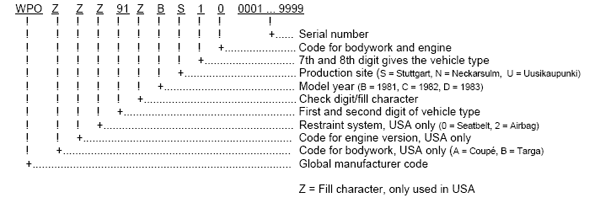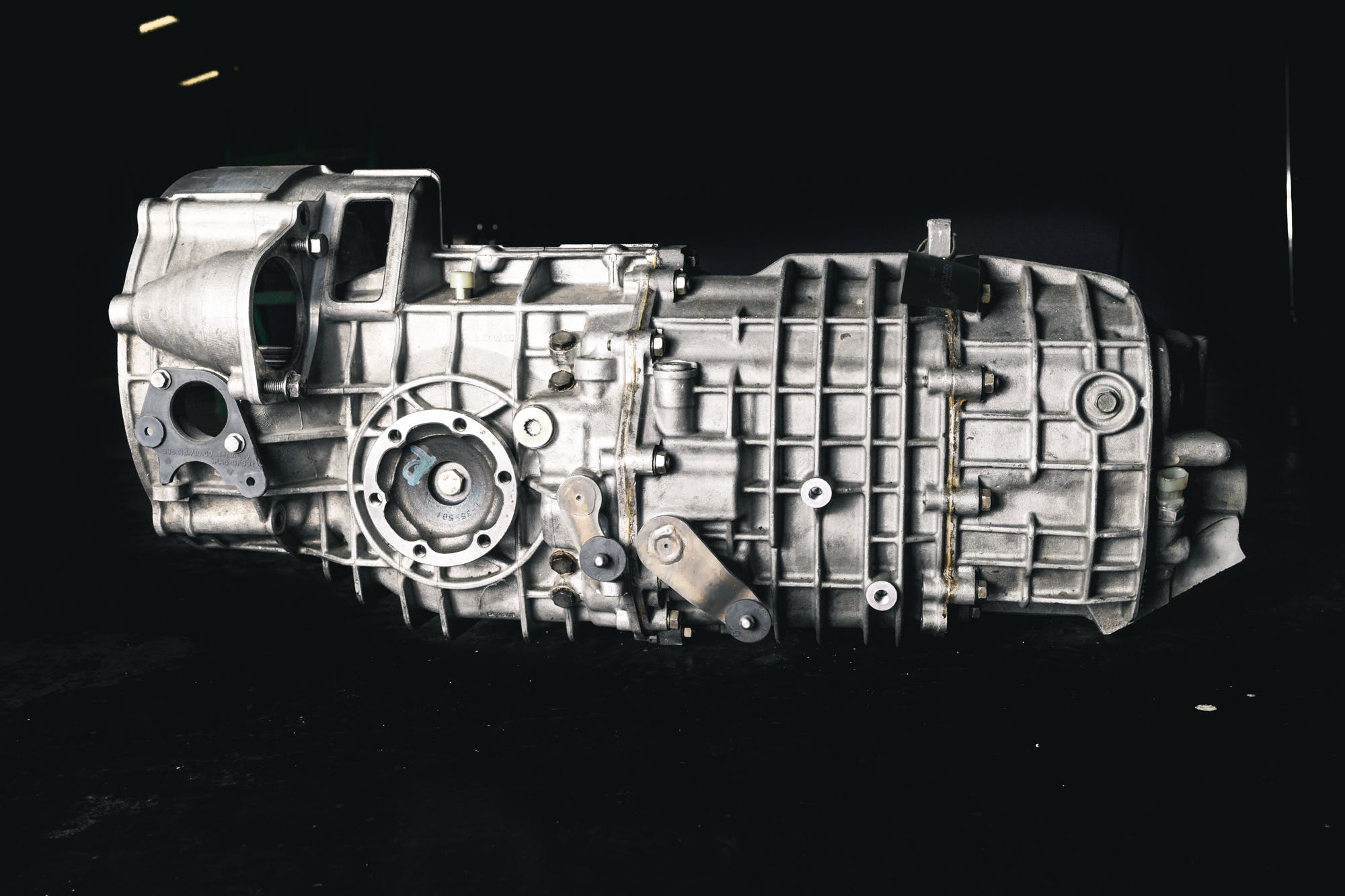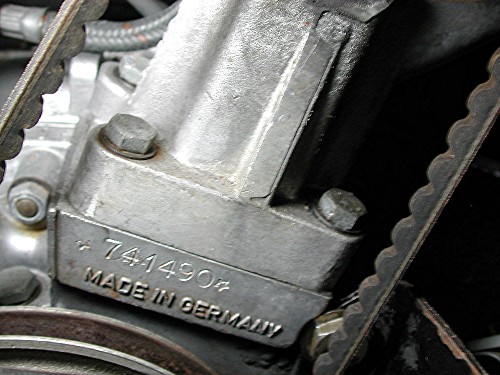

- Porsche 911 engine serial numbers install#
- Porsche 911 engine serial numbers driver#
- Porsche 911 engine serial numbers manual#
These last two items are the subject of this essay. Magnesium is an interesting metal: Light in weight, excellent temperature transferring properties, easy to machine, stable…. As an aside, the Factory race department, and others were able to squeeze all the way to 3.0 liters using this block. The initial displacement was 2,0 liters and eventually the design worked up to the 2.7 liter. The first production cars were offered to the public then and with this architecture / design it continued through 1977. Starting in 1968, the engineers came up with a different casting technique using magnesium, for the block. These were the best for longevity and in fact Porsche brought the aluminum block back into production with the Carrera RS 3.0, Carrera 3.0, 76-77 930 Turbo, and of course the 911SC through the 3.2 Carrera of 1989. Though heavy, these were very stable and typically lasted the lifetime of the car, and beyond.

Starting in 1964 Porsche produced the engine blocks in cast aluminum. Wherever those parts have a sealing surface, is a chance for leaks to occur. Its horizontal architecture layers various parts to build a complete engine. Porsche said of Walker that: "The perils, risk, and danger were open and obvious and known to him, and he chose to conduct himself in a manner so as to expose himself to such perils, dangers, and risks, thus assuming all the risks involved in using the vehicle.The 911 engine has been around since 1964 and in various modifications of the basic design, was used all the way to the water cooled era. The lawsuit from the Walker family blamed Porsche for defects in the car, including instability and seat belt placement. Some manufacturers claim a ten-year tire life, but that depends on how the tire is stored and things like exposure to heat.

Many manufacturers say to replace tires six years after their production date, whether they are worn or not. That means the tires were at least eight years old, probably nine, and rubber degrades over time. The 2005 car had 3,500 miles on the clock, and its original tires. However, it was determined that the reason for the loss of control was down to the age of the tires. The crash happened on a street with a 45 mph limit that's a popular spot for drifting, but an investigation determined the car was traveling between 80 and 93 mph at the time. His friend, Roger Rodas, who also died in the accident, was behind the wheel.

Walker wasn't driving the Carrera GT when it crashed in 2013. The other engineer deposed said that Porsche didn't put PSM on the Carrera GT because its customers didn't want it.
Porsche 911 engine serial numbers install#
One Porsche engineer said it wasn't possible to install Porsche's standard system (Called PSM) because the chassis design and suspension mountings would make vibrations that would interfere with its operation. Various reasons have been given for the lack of ESC on the car from Porsche wanting to appeal to hardcore enthusiasts sick of electronics encroaching on their driving, to it being a way of keeping the already expensive Carrera GT's cost down.Īfter a collision at the California Speedway track in 2006 killed the passenger of a Carrera GT, in the ensuing lawsuit Porsche gave two different reasons for excluding ESC in the car. He lifted off the throttle while entering a turn, spinning it five times but got away with not hitting a wall.
Porsche 911 engine serial numbers driver#
With no ESC, there's nothing to flatter a driver by making up for mistakes, something Jay Leno learned at Talladega during a high-speed run on the track.
Porsche 911 engine serial numbers manual#
It has a manual transmission, and no electronic stability control (ESC). One of the celebrated aspects of the Carrera GT is that it's the last of the analog supercars. A manual six-speed transmission controls that power at a time when supercar companies like Ferrari and Lamborghini were moving into paddle-controlled transmissions without a clutch. The final production model was still far from tame, making 603 horsepower and 435 lb-ft. Just before the Carrera GT went on sale, Porsche test driver and legendary race car driver, Walter Rohrl, said it was "the first car in my life that I drive and I feel scared." He also said the power level it had during testing would be unmanageable for ordinary drivers. Like a race car, it has a pure carbon-fiber monocoque chassis and subframe, as well as inboard suspension featuring pushrod actuated shock absorbers. At its heart is a mid-mounted 5.7-liter V10 engine derived from a shelved Formula 1 project, and the car's development can be traced back to the Porsche 911 GT1 and LMP race cars. It was one of the most advanced supercars of its time and remains one of the most exciting to drive today.


 0 kommentar(er)
0 kommentar(er)
